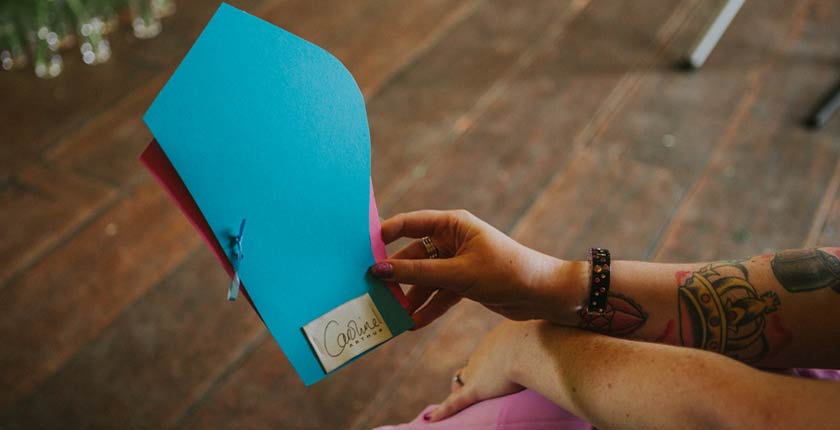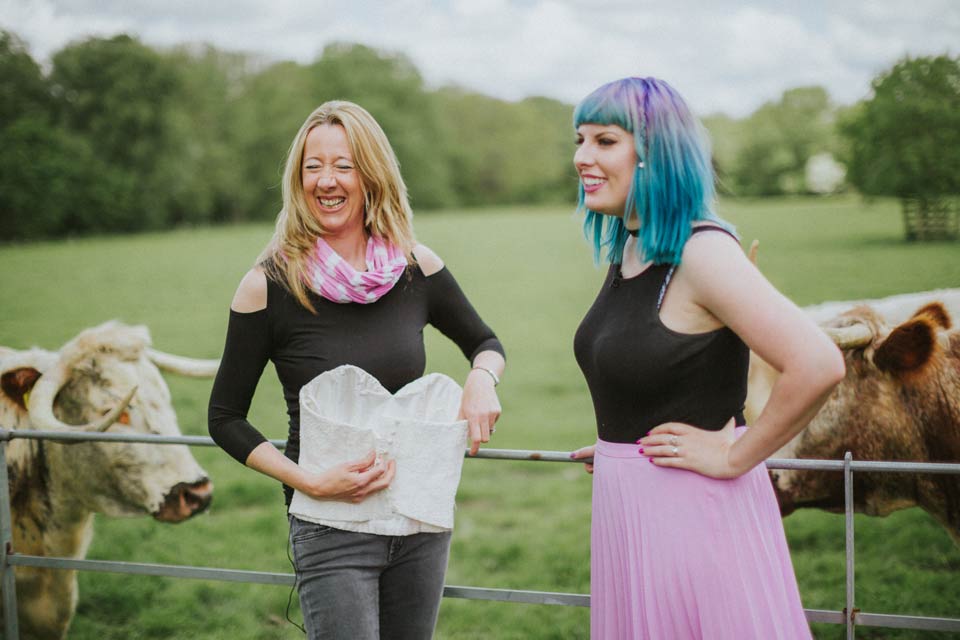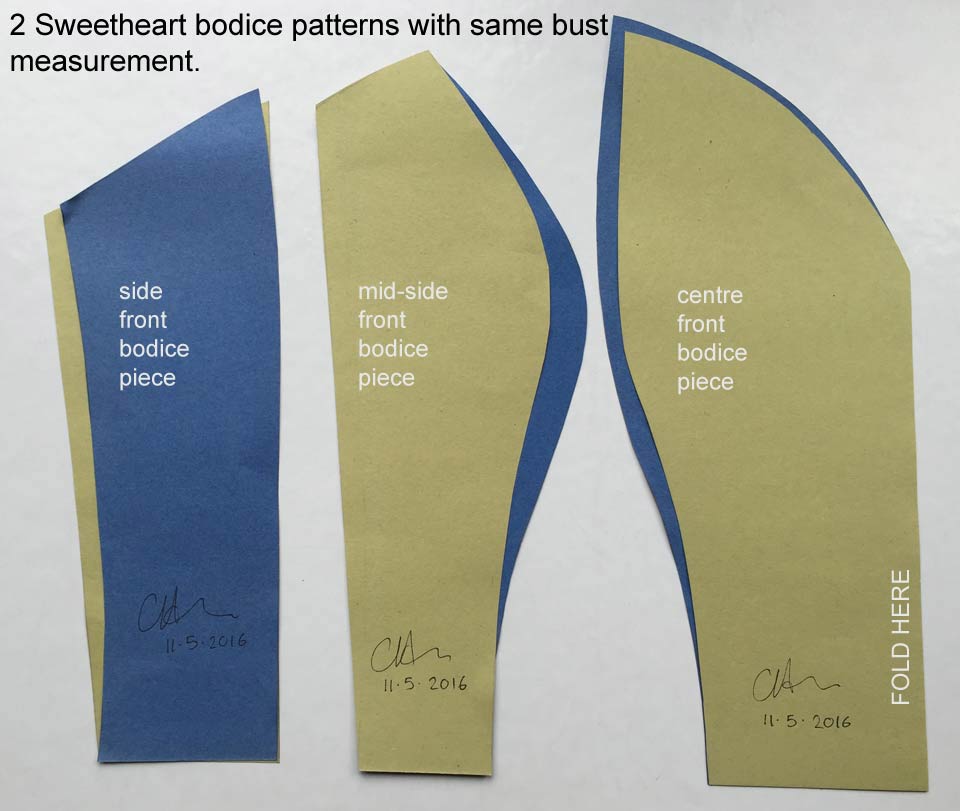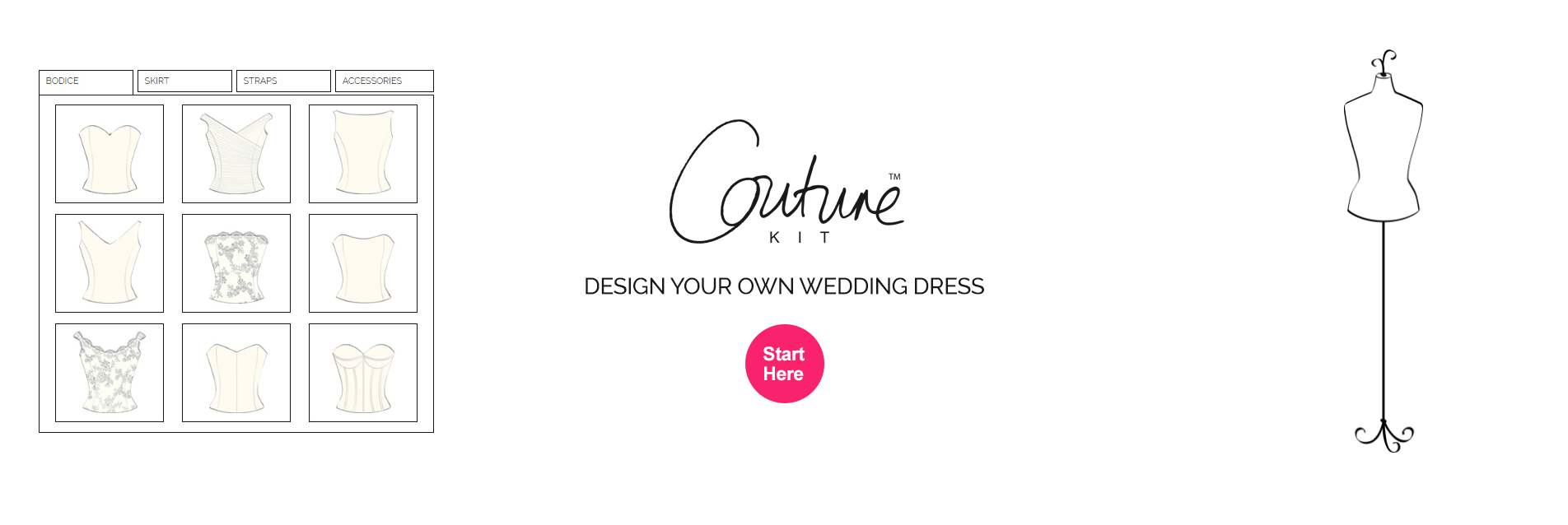Wedding dress construction and alterations

Wedding Dress construction and alterations
INSPIRING INDIVIDUALITY
Here, I’ll explain a little about how wedding dresses are constructed and take a look at alterations and why they are nearly always necessary. Every bride wants to look her best on her wedding day and by becoming an armchair expert on this subject, you will be able to make calm and informed choices.
In this video, I talk to Rock n Roll Bride blogger Kat Williams about how it works…
There are two main kinds of alterations: one is to accommodate weight change, and the other is for “shape differential” to a standard pattern. The second one, you have no control over, but the first one, you do.
Firstly: WEIGHT CHANGE ALTERATIONS
This is when you have a dress taken in or let out according to weight change – see my previous blog on Weight change and wedding dresses regarding this.
Tighter the better? How tight should you go? To make this decision, bear in mind:
Having a dress taken in too much so it is really tight, usually makes you look bigger.
You will probably need to breathe, walk, eat, laugh, sit down, go to the loo and climb steps during your wedding day… it’s worth trying out as many of these as you can during a fitting. It’s a case of finding a happy medium between comfort and beauty… for example, even though a very snug mermaid or fishtail style can look fabulous when standing still, waddling like a penguin because you can’t move your knees doesn’t look so good!
All dresses can be taken in, but if the sample you try on in the shop is huge, and you’re worried about this, then insist on coming for another appointment when the fitter is there, so you can ask her how she would do this. This is perfectly reasonable and if it helps you feel confident and in control then it is essential.
Letting dresses out however, sometimes involves adding extra panels to the dress. This is possible, but is more involved and costly – to avoid this, it is better to order a bigger size and have it taken in.
Usually, wedding dresses are designed to be taken in or let out on the side seams, but if there is a large amount to take in or let out, often this is taken from several different seams. If you’re unsure what the fitter is doing when she’s pinning, it is perfectly reasonable to ask her to explain what she is doing and why.

Secondly: SHAPE DIFFERENTIAL ALTERATIONS
By this, I mean the difference between your body shape and the “standard size” shape your dress is made in (eg. a size 12 which might mean Bust 36”, Waist 29”, Hip 38”).
By the way “ means inches…I was a child of the 1970s…they didn’t use centimetres then!
You don’t need to worry about this – I’m just hoping that by understanding a little about how standard wedding dress patterns are made, you’ll feel less worried by the fact that if you try on a wedding dress sample in a shop and the fit is dreadful, it doesn’t mean you should discard that particular style of dress, it just indicates you would need to pay extra for alterations to have it tailored to your shape. No-one’s fault, it’s just how dresses are mass-produced. The only way to avoid it really is to have the dress made for you, which of course, I wouldn’t try and talk you out of!

So, to explain…it may be that you are a Bust 34” (size 10), a Waist 27” (size 10) and Hip 40” (size 14). The shop will therefore order the dress in a size 14, so you would expect when you come to try it on, for the bust and waist to be 4 inches too big. Some brides find this very upsetting and feel they’re being charged extra for alterations because the shop ordered a size too big. Please be reassured this is not the case – if they ordered the size 10, it would not go over the bum. The size 14 can be altered down to a 10 where necessary, but it is much harder and more costly to add panels / let it out in places.
With these “shape differential” alterations, often the fitter will be pinning odd parts of the dress, such as the back seams around the waist, or the top of the bust seams, as well as adjusting the side seams if necessary. If there is a lot of beading or detail on the dress, this may govern where she can adjust from, without disrupting the design of the dress,…again, if you’re not sure, don’t be afraid to ask.
These images shown above are of the pattern pieces used to make a sweetheart bodice front, for two brides who have exactly the SAME bust measurements as each other. One is broad-backed, small bust, athletic, and the other is a G cup hourglass. I’ve shown them together at the top so you can see the difference.
Neither are close to a “standard size” pattern in which the majority of dresses are made, so both will need quite a lot of alterations to tailor them into a perfect fit. This is not a problem – the bride just needs to allow some extra in her budget for this.
OPTION 3
With my obsession for achieving the perfect fit I couldn’t resist developing a solution for the bride who isn’t a “standard size”. After months of concept testing – I perfected my unique Bespoke Pattern System. This means my standard size patterns (12, 14, 16 etc), are also adjusted for variances in height and cup size. So for instance, from us, you can Design Your Own Wedding Dress and order it in a size 12 G cup Petite height, or a size 18 C cup Tall height, or whichever silhouette you have. Which means so long as you don’t alter, the dress won’t need any alterations – creating the perfect fit every single time. Now that really is made to measure! Discover more about the Bespoke Pattern System in my upcoming blog.



Leave a Reply